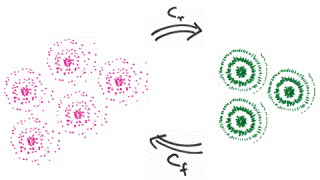Apr 1 2016
UAB researchers have come up with a method that allows measuring the strength of the coherence of superposition in any given quantum state, similar to the famous Schrödinger's cat, which was simultaneously dead and alive. For the first time ever, the method can be used in any given quantum state in superposition.

One of the main principles of quantum physics is the superposition of states. Systems which are simultaneously in different states, i.e. "alive and dead" at the same time such as Schrödinger's cat, until someone measures them and the system opts for one of the possibilities. As long as the superposition lasts the system is said to be in a coherent state. In real systems, sets of diverse elemental particles or atoms existing in a state of superposition, for example, in different positions simultaneously, with different levels of energy, or with two opposite spins (rotating trajectories), are said to have weak coherence: the superposition is broken easily by the vibrations associated with temperature and interactions with the environment.
In the article, researchers from the UAB Department of Physics Andreas Winter and Dong Yang propose a groundbreaking method to measure the strength of coherence in any given quantum state. The researchers created simple formulas to calculate how much "pure coherence" is contained in a given quantum state, by answering two fundamental questions: How efficiently can one transform the state into "pure coherence"? And how efficient is the reverse process?
"At first the quantum state must be distilled. We must see how much coherence can be extracted from it", explains Andreas Winter, to later "once again form a state of 'noise' in which the coherence is diluted". The distillation and dilution process allows measuring the strength of the coherence of the initial state of superposition with experiments which can be tailored to each particular case. This is an outstanding contribution to the study of quantum physics given that “traditionally, to measure the degree of coherence of a superposition it was necessary to be able to measure the visibility of interference fringes, linked to standardised experiments”, Winter highlights. “Our approach, in contrast, adapts to all states since it can design an experiment tailored to specific needs.”
The research, conducted by researchers from the Quantum Information Group at the UAB Department of Physics Andreas Winter (ICREA researcher), and Dong Yang, also member of the Laboratory for Quantum Information of Jiliang University Hangzhou in Zhejiang, China, has been published this week in the journal Physical Review Letters.